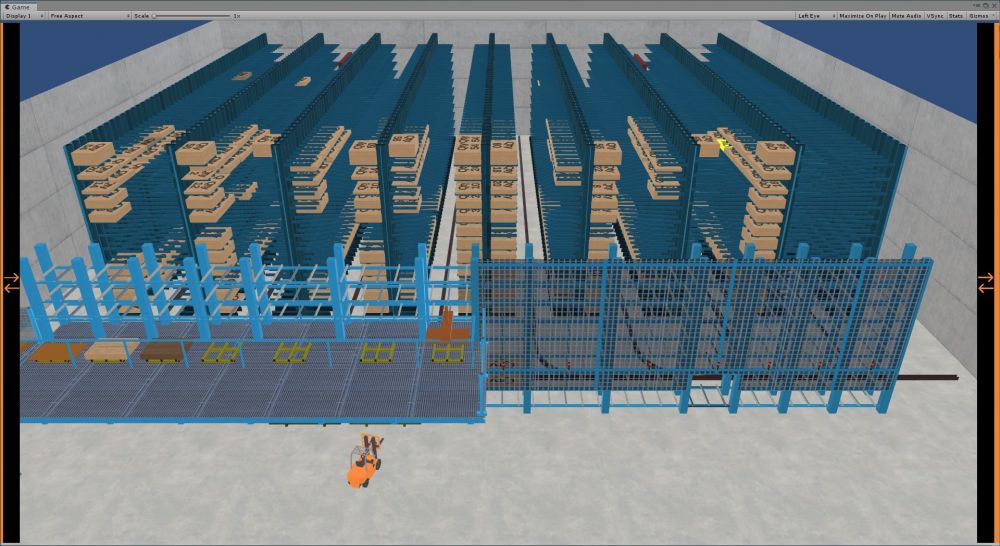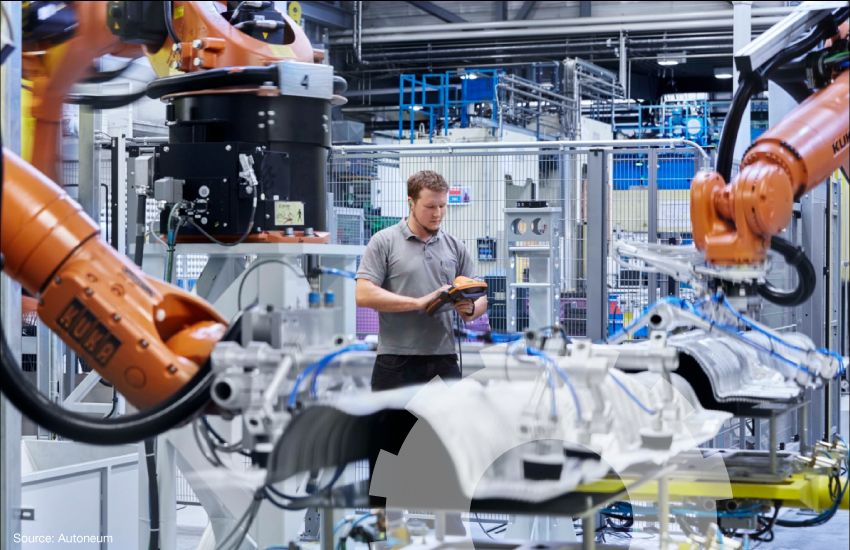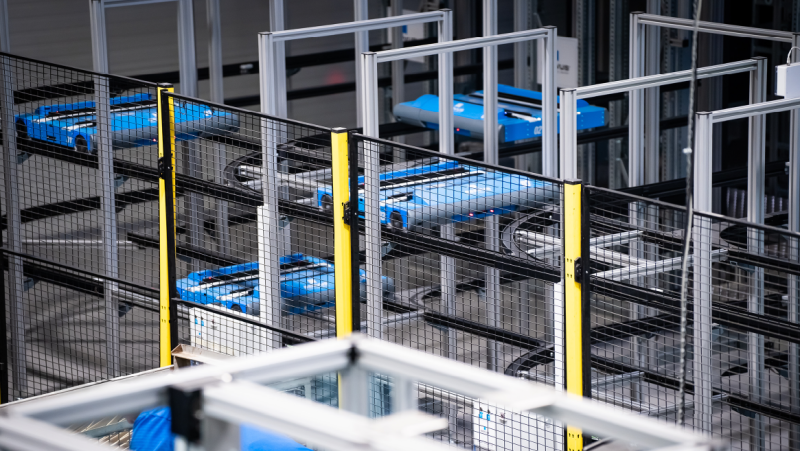How Can You Master Automation? Your Internal Team and Innovative Project Tools Are the Key
- Automation
- Article
Automation’s benefits are clear – saved costs, reduced human error, and faster, more efficient processes. But how much time will it take your team to grasp this Holy Grail? How can you prepare your key people for what awaits them and empower them to enable a smooth course for the entire project? Success is not just about suppliers and technologies, although they do play an important role. An often forgotten, but fundamental pillar lies elsewhere. In your people’s time.
Automation concerns middle management staff such as IT managers and heads of logistics, quality and manufacturing, and precisely these people need to have capacity earmarked so that they can work on the project, and you can thus fully harness the new workings of your internal logistics. But precisely this fact also tends to be a bugbear that scares many firms away from automation projects. Companies that are struggling with a lack of staffing see automation as a possible solution – after all, it’s there to “save” them people. But where should we seek the solution?
In order to approach it, we must first review possible risks that could complicate project delivery.
We will mention five of the most common ones here:
- No precise task is defined for the supplier.
- The target concept fails to flesh out a number of situations; very often only the “all goes well” route is described – there is no identification of error states and their correction processes.
- There is not enough time for prototyping, testing and unit tests, i.e. the system is not properly debugged during the preparations.
- After the system has been brought into production, there is no time set aside for debugging its processes and optimising its operation.
- The system’s key users go away, taking their know-how on the project and its task definition with them.
We wish to avert precisely these scenarios. Once we become aware of them, we can prepare for them and choose both a suitable supplier and a method of cooperation and ongoing consultations. A question remains on the table all the same: What should be included into a project so that your team will be able to handle it?
Prepare your team for the project’s size and be a step ahead
Take the typical example of a project for a fully automated warehouse with automated cranes, handling robots and conveyor belts. The delivery of the whole solution, including software integration, can amount to 300 man-days from the supplier. To ensure your project succeeds and you can avoid the above-mentioned most frequent “errors”, you should spend the same time on the project on your side as well. Even though the overall amount of time may sound frightening, recalculating in real terms brings us to very reasonable bounds.
With a 300-day delivery and a 6-member internal team, a project will take each team member 4 days a month.
Precisely the complexity and company-wide impact of a project can bring one pause, but at the same time, these are its largest added value, which you’ll appreciate the moment its implementation succeeds. Yes, there is a catch. You can’t underestimate preparations. After all, automation isn’t just about redesigning processes at your warehouse. To approach the project strategically, you should also ensure and monitor specifications for other areas:
- changes to its processes in logistics and manufacturing,
- changes and expansions to support within information systems,
- changes to work centres’ physical layout – sometimes even extensive construction.
You might object that this will make the project take almost exponentially longer. That doesn’t have to be the case if you choose the right tools and approach. Over the course of dozens and even hundreds of automation projects, we have learned how to handle complex projects well. Our solution has three pillars.
- Digital delivery increases flexibility and enables a quick return on investment.
- A configurable solution makes it easier to tweak the system both during and after the project.
- A “self-maintaining” information system saves time, money, and training for new people.
Today we are looking at digital delivery; we will go through the other two pillars of automation projects in a future article.
Digital delivery – patently beneficial even during deployment
Digital delivery makes it possible to deploy a project that grows from simple to complex. At the same time, it harnesses the flexibility of digitalisation and applies it to project deployment. What does that mean in practice?
“The goal is the quickest possible delivery of the simplest possible sensible solution, which the customer can begin using so that it can immediately start providing benefits, and their investment can start to pay off. It simultaneously lets them adapt the solution to specific needs that crop up over the course of productive operation based on the daily needs of logistics and manufacturing,” says Aimtec’s Supply Chain Solutions Director Rostislav Schwob.
At the same time, digital delivery resolves several of the problems we’ve mentioned. Logistics is a dynamic field, and it is fairly complicated to envision all the possible paths and solutions before commencing a project. The possibility of gradually adding functionality to the system that was not in the task description when defining the project or that had a low priority within the project is thus a welcome enhancement.
Digital delivery means more than just delivering a project that ends in the digitalisation and automation of processes at a company. It also means digitalising and automating the delivery process itself. The greatest benefit can be seen for relatively standardised activities such as testing, training and documentation.
Project flow and finding space for digitalisation
1. Target concept
Within the target concept, the supplier should provide documentation – a sort of digital guide that can lead the customer through the system solution/application, so that they will better understand its possibilities and can better imagine its tangible benefits. The target concept is actually a vehicle for the integrated know-how and best practices in the given area.
2. Prototyping, the unit test and the integration test
Experience has shown that most misunderstandings have their origins in the start of a project, during verbal and oral definitions. To prevent these, a testable solution prototype must be presented as soon as possible. The most suitable variant for the customer’s specific needs is then picked out based on this practical experience.
The digital simulator is another vital tool when designing complex solutions; it helps to identify inappropriately defined processes and blind alleys. The goal is to shorten verification of the proposed concept as much as possible. This simulator can shorten a project by as much as 30 percent, and its prototype phase by even 50 percent. It helps to save time on both the customer and supplier sides – especially in the phase where the technologies have not yet been delivered and the unit tests to verify technical fitness have not yet been performed.

Digital simulator of an automated warehouse. Source: Aimtec
The graphical configuration tool is another key point – it helps with designing the overall shapes of processes and integrating various processing equipment in an easily grasped environment with no programming needed. It lets the user define a large number of variants while keeping things clear and well organised. It also supports automatic documentation: the processes set up within the tool are documented automatically, with no need for manual entry. The documentation is available from the application online from anywhere at any time.
3. Digitalising training
Even when applications are user-friendly and easy to use, there is a need to train the internal team in how they work and how to use them. In situations where the supplier and customer are sitting at opposite ends of the nation or the world, training in-person and on-site is often unsuitable in terms of finances and time. Because of this, Aimtec has a number of training resources available online in digital form. This also lets the customer team renew their knowledge repeatedly and provides an easy way to train new staff. The video training sessions additionally serve as a tool through which the customer can get to know the application before the actual start of project definition, so that they can try out the possibilities and suitable paths to taking advantage of the application.
Digitalising a deployment project for e.g. a fully automated warehouse can, as we have shown above, save time, and through this also money, but it also minimises misunderstandings on both sides. But how are things after operations have launched? Where is there room for automating automation? We’ll take a look at that next time.
Share article
Top stories from logistics, production and IT.
Subscribe to Aimtec Insights
By registering, you agree to the processing of your personal data by Aimtec as described in the Privacy policy.
Get top stories and articles
from Logistics, Production and IT.
Subscribe to Aimtec Insights
By registering, you agree to the processing of your personal data by Aimtec as described in the Privacy policy.








